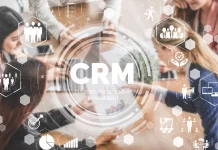
In today’s business landscape, data is the new gold. It offers critical insights that drive decision-making, influences strategies, and sets businesses apart in an increasingly competitive marketplace. Particularly for financial institutions, enterprises, credit card companies, lenders, and advisory firms, small business data is a treasure trove of insights waiting to be unearthed.
The Power of Small Business Data
Leveraging business to small business data can provide a competitive advantage that differentiates companies from their counterparts. It gives an in-depth understanding of market dynamics, consumer behavior, and industry trends. For financial institutions and enterprises, it offers precise knowledge about a business’s financial health, operational efficiency, and growth potential. All these insights collectively enable informed, data-driven decision-making that aligns with organizational objectives and market realities.
Sources of Small Business Data
The integrity of any analysis is as good as the data it’s based on. Therefore, obtaining accurate and comprehensive small business data is crucial. Sources like government databases and public records are often a reliable start. They offer valuable information about registration, financial statements, and operational performance. Additionally, private data providers and industry-specific sources offer granular data sets that cater to specialized data needs of organizations, enabling more detailed and context-specific analyses.
Key Data Points for Analysis
Analyzing small business data entails a careful examination of multiple data points. Financial data like revenue, cash flow, and profitability provide insights about a company’s financial health. Operational data such as growth rate, customer acquisition, and market share depict performance in real-time. These data points collectively offer a comprehensive picture of a small business’s viability and potential for success.
Data Analytics and Interpretation
Data analytics is the bridge that transforms raw data into actionable business intelligence. By utilizing statistical analysis and machine learning techniques, it’s possible to discover patterns, trends, and correlations that might otherwise go unnoticed. Such insights can guide strategic decision-making, enabling companies to stay ahead of the curve in a highly competitive environment.
Competitive Intelligence and Benchmarking
Small business data is a valuable resource for competitive intelligence. It offers insights about market trends, performance, and customer behavior, allowing companies to benchmark their performance against industry peers. This data-driven approach to benchmarking facilitates the identification of opportunities and potential risks, enabling proactive business strategy formulation.
Risk Assessment and Credit Evaluation
For financial institutions and lenders, small business data plays a pivotal role in assessing creditworthiness and risk profiles. By analyzing financial and operational data, these institutions can make informed lending decisions. This data-driven approach reduces risk and promotes responsible lending, contributing to the overall health of the financial ecosystem.
Partnering with Data Service Providers
Partnering with specialized data service providers can optimize data collection, analysis, and interpretation. These providers offer customized data solutions tailored to the specific needs of financial institutions and enterprises. They ensure data accuracy, reliability, and compliance with regulatory requirements, making them a vital cog in the wheel of data-driven decision-making.
Conclusion
Small business data is an invaluable asset for financial institutions, enterprises, and other large companies. It allows them to make informed, strategic decisions, gain a competitive advantage, and achieve success. The key is to harness this data effectively and, where necessary, engage the services of specialized data providers to realize the full potential of small business data. The future of business lies in data, and the time to embrace it is now.










